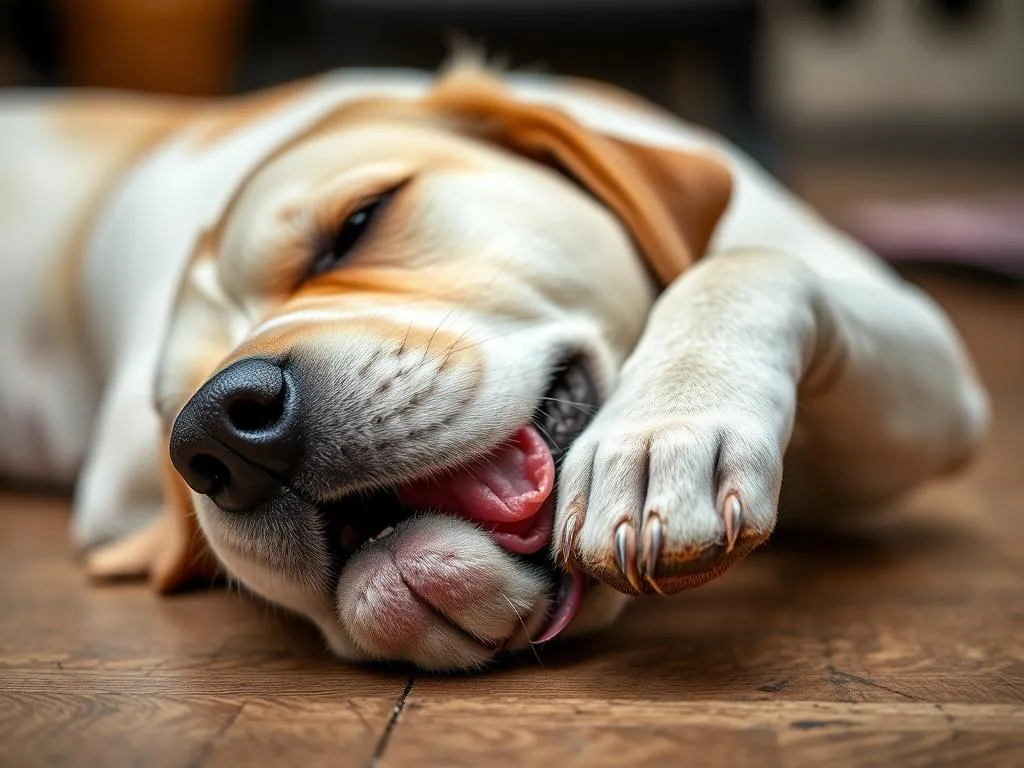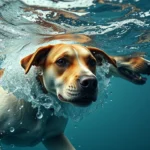
Introduction
As a loving dog owner, ensuring your furry friend’s health and happiness is likely a top priority. Dog health care encompasses a range of practices aimed at preventing illness and maintaining optimal health. A significant part of this involves understanding your dog’s behaviors, as these can often signal underlying health issues. One behavior that many pet owners notice is paw licking. In this article, we will delve into the various reasons why dogs lick their paws, helping you to better understand this common canine behavior and its implications for your dog’s overall health.
Understanding Canine Behavior
The Importance of Behavioral Understanding
Dogs communicate through their behaviors, and understanding what these actions mean can be vital in assessing their health. For instance, excessive paw licking may indicate discomfort or distress. Recognizing these signs can lead to early intervention and better health outcomes for your pet.
Common Canine Behaviors
Dogs exhibit a wide array of behaviors, many of which are instinctual. For example, behaviors such as chewing, barking, and digging can be traced back to their wild ancestors. However, dogs also learn behaviors from their environments and interactions with their owners. Understanding both instinctual and learned behaviors can help you decipher why your dog may be licking their paws.
Reasons Why Dogs Lick Their Paws
Allergies
Allergies are one of the most common reasons for paw licking in dogs. These can be classified into two main types: food allergies and environmental allergies.
- Food Allergies: Some dogs may develop allergies to certain ingredients in their food, leading to skin irritation and itchiness in their paws.
- Environmental Allergies: Seasonal allergies, such as pollen or dust mites, can also trigger paw licking.
Symptoms accompanying paw licking include redness, swelling, or discharge from the paws, indicating that the dog may be experiencing an allergic reaction.
Skin Irritations
Dogs can suffer from various skin irritations that may prompt them to lick their paws excessively. Common culprits include:
- Fungal Infections: These can cause itching and discomfort, leading to frequent licking.
- Hot Spots: These are localized areas of skin inflammation that can be very itchy and painful.
Identifying signs of skin irritation, such as redness, hair loss, or lesions, is crucial for addressing the problem effectively.
Anxiety and Stress
Just like humans, dogs can experience anxiety and stress, which can manifest in various behaviors, including paw licking.
- Behavioral Signs of Anxiety: These may include excessive barking, destructive behaviors, or withdrawal.
- Stress Manifestation: Paw licking may serve as a coping mechanism for dogs to calm themselves when feeling anxious.
Understanding the triggers of your dog’s anxiety can help you manage their stress levels more effectively.
Boredom
Dogs require mental and physical stimulation to thrive. A lack of engagement can lead to boredom, prompting dogs to lick their paws as a way to entertain themselves.
Engaging your dog in activities such as:
- Daily walks
- Interactive toys
- Puzzle games
These can help reduce boredom and replace the paw licking behavior with more constructive activities.
Injury or Pain
If a dog is licking their paws excessively, it could be due to an injury or pain.
- Identifying Injury: Look for signs such as limping, swelling, or visible wounds.
- Regular Examination: It is essential to examine your dog’s paws regularly to catch any injuries early.
If you suspect an injury, seeking veterinary care is crucial to prevent further complications.
Health Implications of Excessive Paw Licking
Chronic Conditions
Excessive paw licking can result in chronic conditions that can be detrimental to your dog’s health.
- Dermatitis: This skin condition can develop from ongoing irritation and lead to further itching and discomfort.
- Infections: Bacteria can thrive in moist environments created by constant licking, leading to infections that necessitate medical treatment.
Impact on Quality of Life
Chronic paw licking can significantly impact your dog’s quality of life. Dogs experiencing discomfort may exhibit changes in behavior, such as irritability or reluctance to engage in activities they once enjoyed. Monitoring these changes can be vital for maintaining your dog’s overall well-being.
When to Seek Veterinary Care
Signs That Require Immediate Attention
While some paw licking is normal, certain signs warrant a visit to the veterinarian. Look for:
- Severe Redness or Swelling: Indicating a possible infection or injury.
- Persistent Licking: That does not improve with home care.
- Behavioral Changes: Such as increased aggression or withdrawal from normal activities.
Importance of Regular Check-Ups
Regular veterinary visits play a crucial role in preventing or identifying health problems early. Your vet can conduct routine examinations and provide guidance on maintaining your dog’s health, including dietary suggestions and allergy testing.
Communication with Your Vet
When discussing your dog’s behavior with your veterinarian, be prepared to provide detailed information about:
- The frequency and duration of the licking.
- Any accompanying symptoms you’ve observed.
- Changes in your dog’s environment or routine.
This information can help your vet make a more accurate diagnosis.
Home Remedies and Care Tips
Soothing Treatments
Natural remedies can be beneficial for soothing irritated paws. Some options include:
- Oatmeal Baths: These can help relieve itching and inflammation.
- Coconut Oil: Applied topically, it can provide moisture and act as an antibacterial agent.
When using topical treatments, ensure they are safe for dogs and consult your veterinarian for recommendations.
Ensuring a Healthy Environment
To minimize allergens and irritants in your home:
- Regularly clean your dog’s bedding and toys.
- Vacuum frequently to reduce dust and dander.
- Consider using air purifiers to improve air quality.
Additionally, cleaning your dog’s paws after walks can help remove allergens and irritants.
Enriching Your Dog’s Life
To combat boredom and promote mental stimulation:
- Introduce new toys that challenge your dog’s problem-solving abilities.
- Schedule playdates with other dogs to encourage socialization.
- Incorporate training sessions to keep their minds sharp.
Creating a stimulating environment can help reduce unwanted behaviors, including paw licking.
Understanding Your Dog’s Needs
Observing Patterns
Keeping a journal of your dog’s behavior can help identify patterns and potential triggers for paw licking. Note any changes in their environment, diet, or routine, and look for correlations with their licking behavior.
Building a Strong Bond
The relationship you have with your dog plays a significant role in their emotional well-being. Spending quality time together, whether through play or simply relaxing, can help strengthen your bond and reduce anxiety-related behaviors.
Conclusion
Understanding why dogs lick their paws is essential for maintaining their health and happiness. From allergies and skin irritations to anxiety and boredom, various factors can contribute to this behavior. By paying attention to your dog’s actions and seeking veterinary care when necessary, you can ensure they lead a comfortable and fulfilling life. Remember, fostering a loving environment and engaging your dog in stimulating activities can significantly impact their overall well-being.
By being proactive and attentive to your dog’s needs, you can help them thrive and enjoy a happy life by your side.









